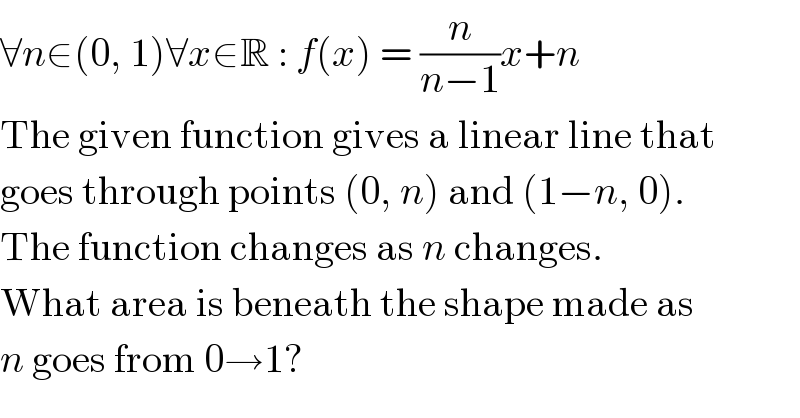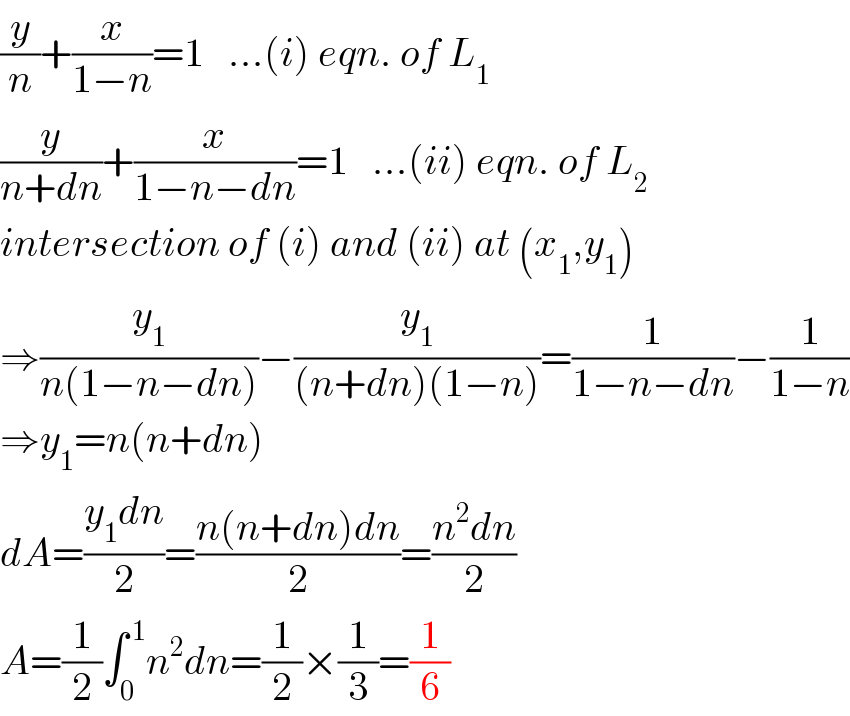
Question and Answers Forum
Question Number 106867 by Penguin last updated on 07/Aug/20

Commented by Penguin last updated on 07/Aug/20

Commented by Penguin last updated on 07/Aug/20

Commented by Penguin last updated on 07/Aug/20
![Always makes triangle with A=(1/2)n(1−n) A=(1/n)(t_1 +t_2 +...t_n ) t_n =sum of nth triangle t_n =(1/2)n(1−n) t_(n+1) (1/2)(n+ε)(1−n−ε) for infinit triangles: A=(1/1)∫_0 ^( 1) (1/2)n(1−n)dn A=(1/2)[(1/2)n^2 −(1/3)n^3 ]_0 ^1 A=(1/(12)) Thks looks wrong, as the plot looks like: A=1−(π/4) ((1/4) circle in a sqare)](Q106877.png)
Answered by Her_Majesty last updated on 07/Aug/20
![f_p : y=(p/(p−1))x+p f_q : y=(q/(q−1))x+q f_p ∩f_q : (p/(p−1))x+p=(q/(q−1))x+q x=(p−1)(q−1) y=pq now q→p x=(p−1)^2 y=p^2 p=1±(√x) y=(1±(√x))^2 =1±2(√x)+x your curve y=1−2(√x)+x ∫_0 ^1 (1−2(√x)+x)dx=[x−(4/3)x^(3/2) +(1/2)x^2 ]_0 ^1 =(1/6) not sure if this makes sense...](Q106915.png)
Commented by mr W last updated on 07/Aug/20

Answered by mr W last updated on 07/Aug/20

Commented by Her_Majesty last updated on 07/Aug/20

Commented by mr W last updated on 07/Aug/20

